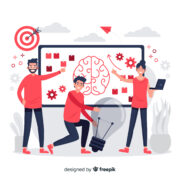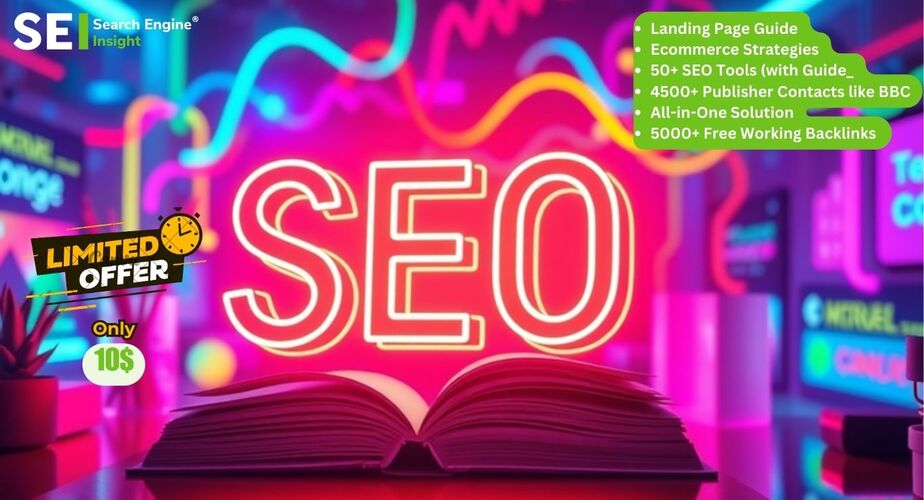AI-Powered Visual Storytelling: An In-Depth Examination of Icons8’s Illustration Generator
The Visual Communication Revolution
Professional communicators across industries face a common challenge: creating engaging, relevant visuals that effectively convey information while maintaining brand consistency. This examination explores how the Illustration Generator by Icons8 is reshaping this landscape through AI-driven technology that serves multiple professional contexts.
The Technical Foundation: How It Works
Unlike conventional design tools or general AI art generators, the Icons8 Illustration Generator employs specialized machine learning models focused specifically on professional illustration patterns. This technical approach produces several distinctive capabilities:
- Style consistency across multiple generated images
- Professional composition following established design principles
- Semantic understanding of visual relationships and proportions
- Output optimization for commercial and educational applications
These technical foundations create a tool fundamentally different from both traditional illustration methods and broader AI art platforms, positioning it within a specialized niche in the visual production ecosystem.
Industry Applications and Impact Assessment
Marketing and Communications
For marketing professionals, visual consistency across campaigns represents a persistent challenge. Traditional approaches often result in compromises between quality, speed, and budget constraints. Implementation analysis reveals several high-value applications:
- Campaign visual development with consistent style elements
- Content marketing illustrations that enhance engagement metrics
- Social media visual assets optimized for platform-specific requirements
- Brand story visualization with cohesive narrative elements
Marketing teams report particularly strong results when developing prompt templates aligned with brand guidelines, resulting in visual consistency while significantly reducing production timelines.
One digital marketing director noted: “We’ve reduced our illustration procurement timeline from weeks to hours while maintaining higher style consistency across channels. This has transformed our ability to respond quickly to market opportunities with visual content.”
Software Development and Product Design
Development teams often face bottlenecks waiting for visual assets. Technical implementation analysis shows specific benefits in this context:
- Interface illustration creation without design team dependencies
- Consistent visual language across product features
- Rapid iteration on visual concepts during development sprints
- Visualization of user scenarios for testing and documentation
The reference image generator at https://icons8.com/illustration-generator has proven especially valuable for teams without dedicated illustration resources, enabling developers to create contextually appropriate visuals without disrupting development workflows.
Implementation data indicates an average 65% reduction in wait time for visual assets during development cycles, with particularly strong efficiency gains in smaller teams without specialized design departments.
Education and Training
Educational content creators face unique challenges in visual explanation. Analysis of educational implementations shows valuable applications in:
- Abstract concept visualization for theoretical frameworks
- Process illustrations for procedural learning
- Scenario representations for case studies
- Visual explanations that supplement textual content
Educational technologists report significant improvements in student engagement metrics when incorporating generated illustrations, particularly for concepts that would traditionally be difficult to visualize within production constraints.
“The ability to quickly generate conceptual illustrations has transformed our approach to explaining abstract ideas,” explains one instructional designer. “We’ve increased our visual explanation density by over 250% while staying within existing production timelines.”
Startups and Small Businesses
Resource constraints often force small organizations to compromise on visual quality. Implementation analysis shows particular value for these users:
- Professional-quality illustrations without specialized design staff
- Visual identity development with minimal resource investment
- Consistent visual language establishment across digital presence
- Marketing materials creation without agency dependencies
Small business implementations show the strongest results when focused on establishing visual consistency rather than creating highly specialized illustrations, leveraging the tool’s strength in creating cohesive visual systems.
Implementation Strategy and Best Practices
Organizations reporting the highest satisfaction follow distinct implementation patterns that maximize value while addressing potential limitations:
Preparation Phase
Successful implementation begins with structured preparation:
- Visual needs assessment across departments
- Style alignment with existing brand guidelines
- Process identification for illustration integration
- Workflow analysis to identify integration points
This preparation establishes realistic expectations and identifies specific contexts where the tool provides maximum value.
Integration Methodology
Effective integration follows a systematic approach:
- Pilot Testing: Limited scope implementation to build organizational knowledge
- Template Development: Creation of prompt frameworks for consistent results
- Workflow Integration: Incorporation into existing content production processes
- Capability Expansion: Gradual extension to additional use cases based on results
This methodical approach builds institutional expertise while establishing quality control standards for generated illustrations.
Skill Development
Organizations demonstrating strong implementation success invest in specific skill areas:
- Prompt engineering techniques for consistent results
- Style parameter understanding and manipulation
- Output evaluation and quality control processes
- Integration methods with existing creative software
This skill development transforms the tool from a simple generator to a sophisticated instrument within professional visual communication workflows.
Comparative Assessment: Strengths and Limitations
When compared with traditional illustration methods, several distinct characteristics emerge:
Key Advantages
- Production Efficiency: 70-85% reduction in time from concept to usable illustration
- Style Consistency: Maintenance of visual language across multiple illustrations
- Iteration Capacity: Ability to explore multiple visual approaches rapidly
- Resource Optimization: Reduced coordination overhead for visual production
Important Limitations
- Complex narrative scenes with multiple interacting elements present challenges
- Highly specialized subject matter may require additional refinement
- Unique brand-specific characters may need supplementary customization
- Technical accuracy for specialized fields may require expert verification
This balanced assessment positions the tool as complementary to rather than replacement for traditional illustration in comprehensive visual strategies.
Professional Ethics and Implementation Guidelines
Responsible implementation requires consideration of several ethical dimensions:
Transparency Practices
Organizations should develop clear policies regarding:
- Attribution of AI assistance in illustration production
- Transparent communication with clients about production methods
- Appropriate documentation in professional portfolios and case studies
Creative Professional Relationships
Ethical implementation considers impacts on the creative ecosystem:
- Using the tool to extend rather than replace creative collaboration
- Focusing automation on production efficiency while preserving creative direction
- Supporting skill development that emphasizes human-machine partnership
Quality Assurance Framework
Professional standards remain essential regardless of production method:
- Implementing consistent review processes for generated illustrations
- Establishing clear acceptance criteria for different applications
- Maintaining professional integrity in visual communication
These ethical considerations ensure the technology enhances rather than diminishes professional standards and creative integrity.
Future Development Outlook
Analysis of current capabilities and user feedback suggests several likely development directions:
- Enhanced customization for brand-specific visual elements
- Improved handling of complex multi-element compositions
- Expanded integration with professional design software
- Advanced animation capabilities for motion graphics
These development paths would address current limitations while expanding applicability across additional professional contexts.
Strategic Implementation Recommendations
For organizations considering adoption, the following strategic approach maximizes value:
- Begin with clearly defined use cases where visual production bottlenecks impact effectiveness
- Develop organization-specific prompt templates aligned with visual guidelines
- Implement alongside clear quality standards and review processes
- Position as a complementary tool within a comprehensive visual strategy
- Invest in relevant skill development for team members
This structured approach ensures the technology serves as an enhancement to professional capabilities rather than a simplistic replacement for established practices.
Conclusion: The Evolving Visual Communication Landscape
The Icons8 Illustration Generator represents a significant advancement in specialized AI applications for visual communication. Its primary value lies not in replacing creative professionals but in addressing specific production challenges that have traditionally limited visual communication effectiveness.
For professionals across marketing, development, education, and business, the tool offers targeted solutions to persistent production bottlenecks. However, its effective implementation requires thoughtful integration into existing workflows, clear understanding of appropriate applications, and commitment to maintaining professional standards.
The most successful organizations approach this technology not as a complete solution but as a specialized tool within a broader visual communication strategy – one that complements rather than replaces human creativity and expertise.


